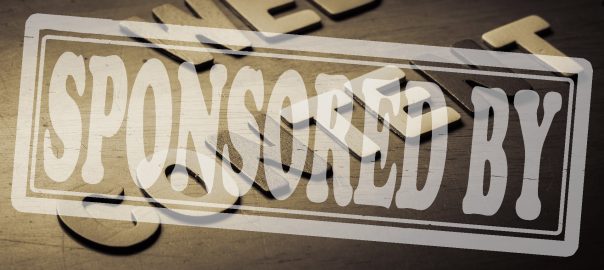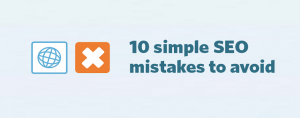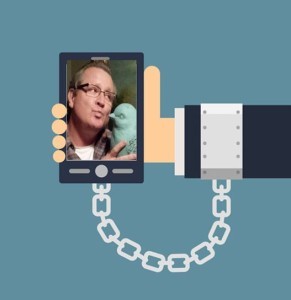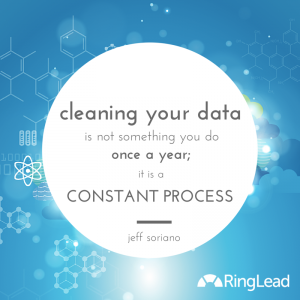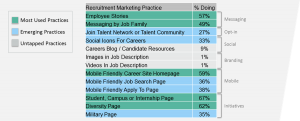Contributor Steve Olenski discusses the advantages of native ads and offers examples of companies doing it right.
 The world of online marketing is constantly changing. Banner ads have been replaced by native ads, which offer a better CTR (click-through rate) and higher leads.
The world of online marketing is constantly changing. Banner ads have been replaced by native ads, which offer a better CTR (click-through rate) and higher leads.
Native advertising has been used for years, but not all advertisers and marketers are familiar with the concept, and hence haven’t hopped on board yet.
So what is native advertising? In simple words, it’s a form of marketing where a paid ad is placed naturally into surrounding content without disrupting the user experience. Native ads mix with the visual element and overall content, appearing as though they’re part of it.
Many industry experts believe that 2017 is the year when native advertising will grow further, with more people waking up to its benefits. The industry is expected to hit the $21 billion mark by 2018.
Native ads can help publishers make money online, while allowing advertisers to reduce their acquisition costs.
Still not sold on the idea? Here are some of the major benefits of using native advertising for both advertisers and publishers:
1. Customers feel empowered, and publishers are in control
Customers hate ads for a number of reasons. Some despise them due to distractions, while some hate ads due to false information.
When consumers are on the web, they are either looking for entertainment or solutions to their problems. They’re technically not always looking for a new product or service; what they have on their mind is a solution.
If a consumer searches for “back pain tips,” he or she is looking for ways to reduce backache, not products to do so. However, they may be interested in purchasing a product if it has the required benefits.
Now imagine this: a person is watching a video on back pain tips, and suddenly a pop-up shows up highlighting a product that reduces backache. This will disrupt the user experience and evoke negative feelings, resulting in the user either leaving the site or feeling irritated.
On the other hand, if the video seamlessly mentions the same product as a way to reduce backache, the person could take it seriously, because the product appears as a solution and isn’t forced on the user. Chances are that he or she may even click on the button to purchase the product, increasing CTR.
This is highly beneficial for publishers, since they’re in total control of what they promote, unlike other options where they don’t have much control over ads displayed on the site.
2. Higher engagement
This is the biggest reason to use native advertising. According to reports, native advertising is more engaging than traditional display advertising, with banner ads falling in popularity and reaching a CTR of around 0.07 percent. And how is native advertising doing in comparison? Here are some stats:
- Native ads are viewed 53 percent more frequently than display ads, providing a higher CTR (60 percent).
- Native ads result in an 18 percent increase in purchase intent.
- Native ads can help lift a brand by up to 82 percent.
Users have learned to turn a blind eye toward ads, which is why banner ads have decreased in popularity over the years. However, users aren’t able to neglect native ads as easily because they blend so well with the content that they appear to be a part of the actual publication.
But a user must be able to distinguish ads from original content to be able to understand the real call to action; otherwise CTR may decrease.
Native ads benefit publishers as well. It’s a known fact that users hate advertisements, especially a page that is full of big banners or pop-ups. However, since native ads mingle so well with the content, users don’t feel as distracted. And if done the right way — with transparency — they can result in low bounce rates and longer duration spent on a page.
3. Native content may get more shares
Since native ads are woven into content that is informative, it has a chance of going viral. People usually shy away from sharing content that looks promotional, whereas they happily share informational content.
This habit is beneficial for both advertisers and publishers. While advertisers get more views and reach a larger audience, publishers enjoy having viral posts that can benefit the website as a whole.
Companies doing it right
As mentioned earlier, now many companies are using native advertising, including almost all social media platforms like Facebook and Twitter with sponsored posts. Here are a few good examples:
- Snapchat: Snapchat has mastered the art of native ads like no other business. It promotes events and movies with the help of its Discover section and even offers branded filters that are used by millions of people around the world.
- BuzzFeed: It’s your go-to platform for fun and viral posts. If you take a look at the site, you won’t see many advertisements on it; however, ads are sewn deep into the content. The Community section frequently uses native ads to promote big brands like HarperCollins.
- Netflix: Many might find it surprising, but Netflix is big on mixing promotional content well with its original content. It has also often joined hands with other major brands like The New York Times to create content about a specific event or product.
Native advertising is not content marketing. Native ads have their own unique appeal, and they are expected to be the next big thing in the world of digital marketing.
Some opinions expressed in this article may be those of a guest author and not necessarily Marketing Land. Staff authors are listed here.
Marketing Land – Internet Marketing News, Strategies & Tips
(44)
